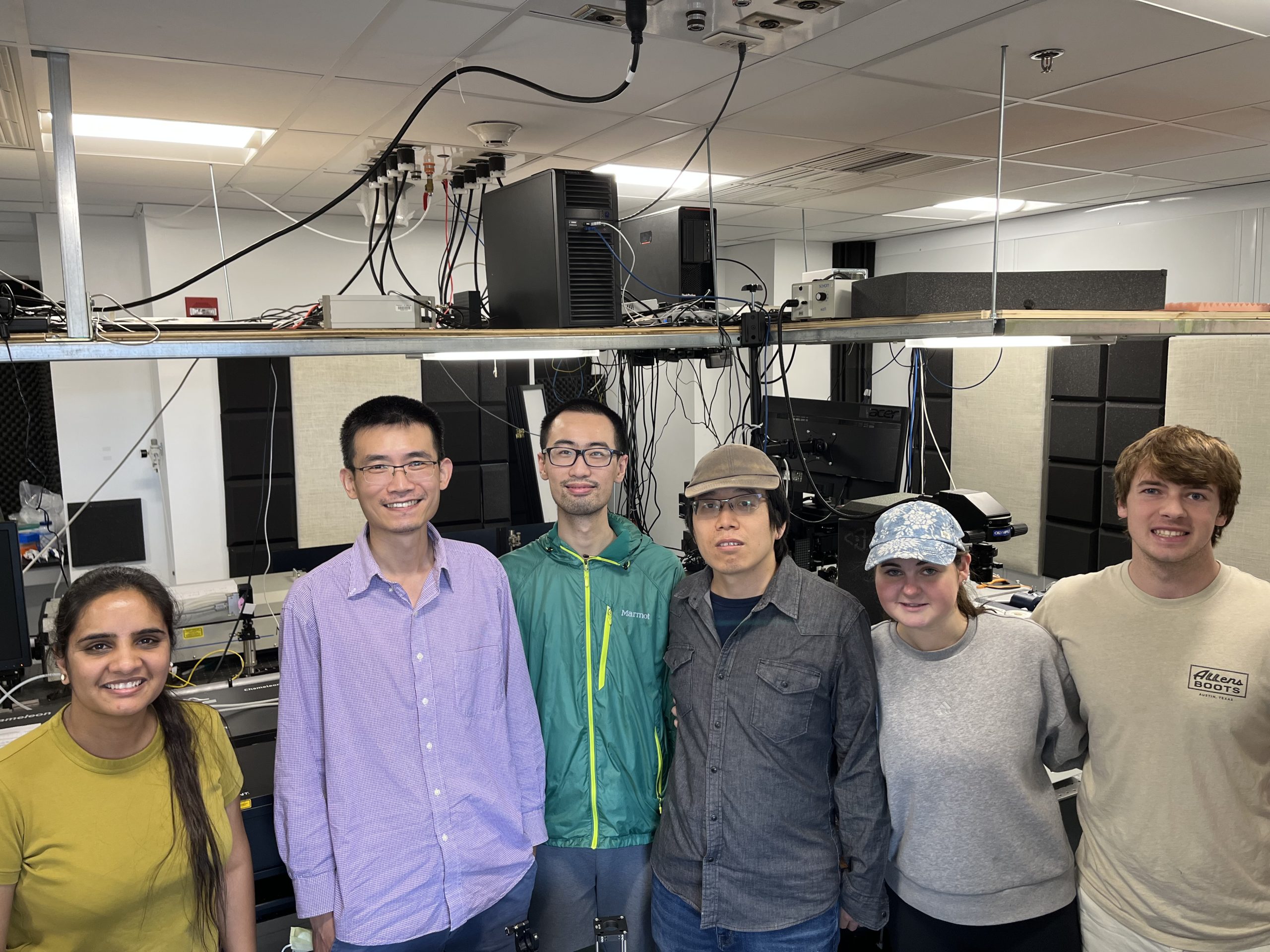Using “optical tweezers” to advance nanomedicine
Zijie Yan, an associate professor in the department of applied physical sciences (APS), is using light to tackle significant challenges in the field of nanoscience. Nanoscience focuses on objects or structures measured in nanometers – one billionth of a meter. Yan uses holographic optical tweezers for his research, a technology that enables precise control and manipulation of nanoparticles using shaped laser beams.
Optical tweezers function similarly to mechanical tweezers, but instead of relying on mechanical forces, they leverage the momentum of light to manipulate and trap nanoscale objects. Yan describes the immense potential for practical applications in biomedicine using light-driven nanomotors and probes built with optical tweezers to precisely manipulate single nanoparticles and their assemblies. “The use of light waves is safe for biological systems and minimally damages cells,” he says, highlighting the superiority of optical tweezers over current drug delivery methods which are based on magnetic fields or chemical reactions.
In addition to precise manipulation, another advantage of optical tweezers lies in their ability to achieve reconfigurable assembly of nanoparticles. Similar to Lego building blocks, nanoparticles can serve as the units of more complex nanostructures and can be rearranged as needed. Optical tweezers offer the possibility of constructing nanostructures inside cells, overcoming the challenge of inserting pre-assembled structures without harming the cell membrane. This innovative approach could reveal avenues to develop advanced nanorobots within cells.
“Nanorobots can measure cells’ pH levels and temperature, among other metrics,” Yan explains. “We can use these measurements to better understand the overall function and health of a cell.”
Yan expresses his goal of employing light to deliver and assemble multifunctional nanoparticles on the cell membranes and within cells, particularly in the contexts of intracellular sensing, targeted drug delivery and gene therapy. By monitoring nanoscale interactions between cellular structures and biological environments, the potential for more precise and effective applications in these fields becomes tangible. “Building new, reconfigurable structures with optical tweezers and using advanced optical microscopy paves the way for these important applications,” says Yan.


Zijie Yan and graduate student Anzhou Wen use an optical microscope to examine nanoparticles

